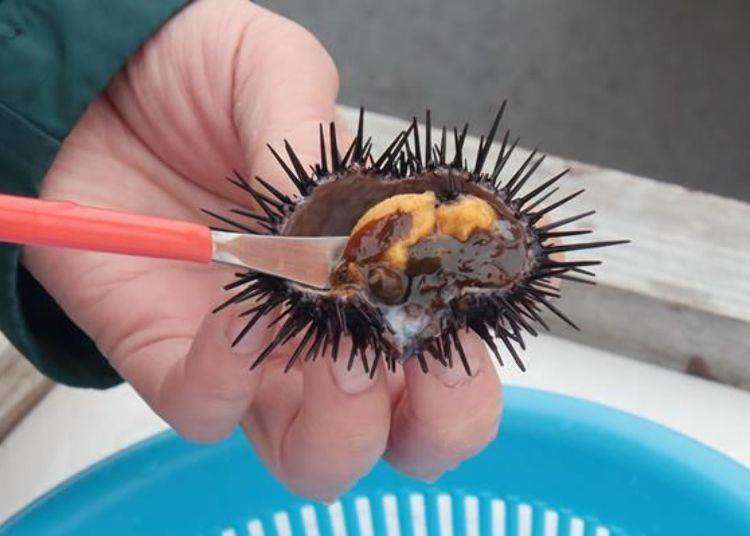
Fresh Hokkaido sea urchin is an incredible, creamy sushi delicacy. Known as uni in Japanese, these spiny creatures can get a bit pricey at restaurants. If you're as much a fan of eating uni sea urchin as we are, you'll want to head right over to Hokkaido's Rishiri Island!
Here you can do what the local fishermen do when harvesting sea urchins: crack open those that you caught and eat them on the spot.
You don’t need to get into the water to do it, either. No need to change clothes and no special preparations are required, so you don’t need to bring anything. At the Kamui Seaside Park on Rishiri Island, you can have such an easy-going and enjoyable experience. Freshly harvested sea urchins are exceptionally delicious!
Here you will find limited edition “exotic sweets” made with fresh sea urchin and Rishiri kelp that certainly should be tried.
- Table of Contents
-
- Visit Hokkaido's Kamui Seaside Park!
- Feel what it’s like to be a sea urchin fisherman!
- Crack open the sea urchin you caught and eat it!
- Try it in a gunkanmaki (rice with a seaweed wrapper)
- You must try the Aisurishirizan ice cream!
- Crab fishing and other fun experiences on Rishiri Island!
- Related Articles on Rishiri Island
Visit Hokkaido's Kamui Seaside Park!
At Kamui Seaside Park you can experience harvesting sea urchins yourself (1,000 yen [around $10] per sea urchin per person) and enjoy local dishes using such special products of the area as sea urchin and Rishiri kelp.
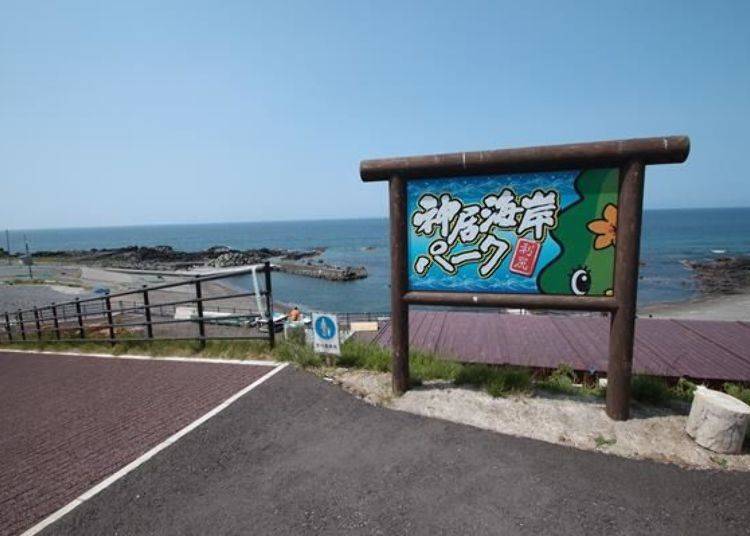
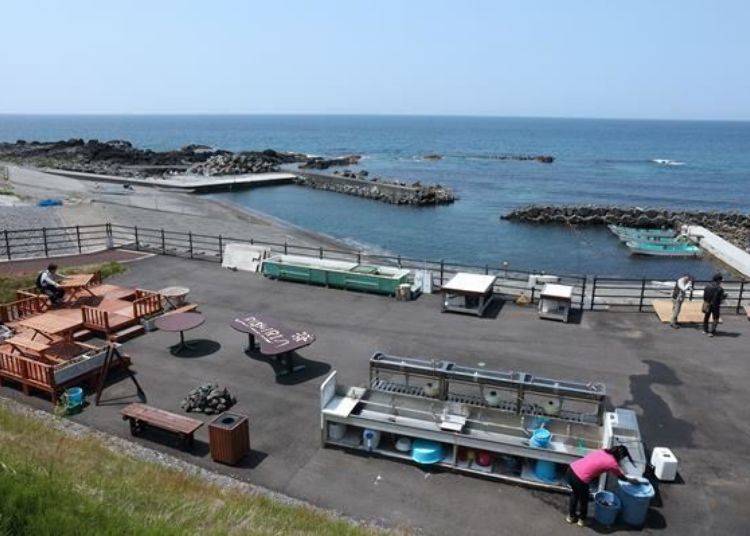
Kamui Seaside Park can be reached by car in about 30 minutes from Oshidomari Port, which is serviced by ships that make several trips each day from Wakkanai and Rebun Island.
Ships running from Rebun Island, which operate only in the summer, arrive at Kutsugata Port, and it is only a 10-minute car ride from there. There is one round-trip flight each from the New Chitose Airport and the Sapporo Okadama Airport to the Rishiri Airport, and from there, it takes about 20 minutes by car (the flight from New Chitose Airport operates only during the summer season).

Local buses do operate on Rishiri Island, but they have only a few scheduled runs, so it is better to rent a car at either Oshidomari Port or Rishiri Airport when you visit. There are many visitors during the summer season, so it is best to make reservations well in advance of your visit.
Feel what it’s like to be a sea urchin fisherman!
So, let’s actually try harvesting sea urchins!
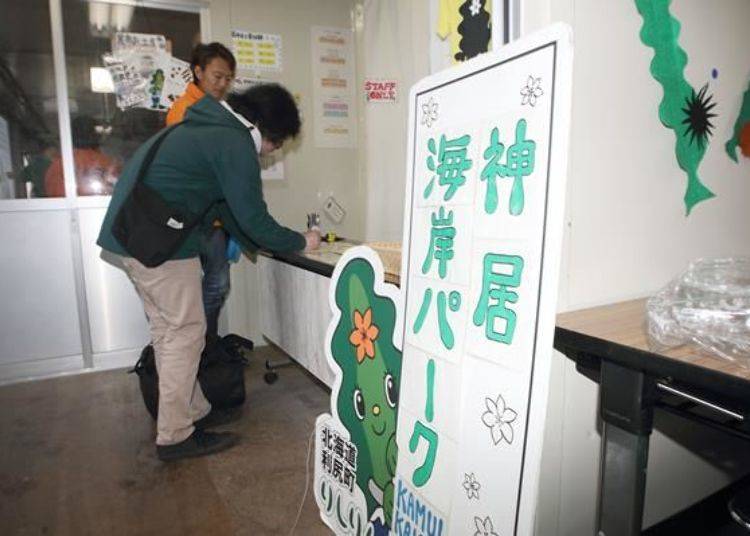
The sea urchin harvesting experience runs from June to September. If the groups are not booked up, you can participate on the day you arrive, but as this is a top-rated experience, it is best to make a reservation in advance. This is especially true during the peak tourist season in the middle of summer.
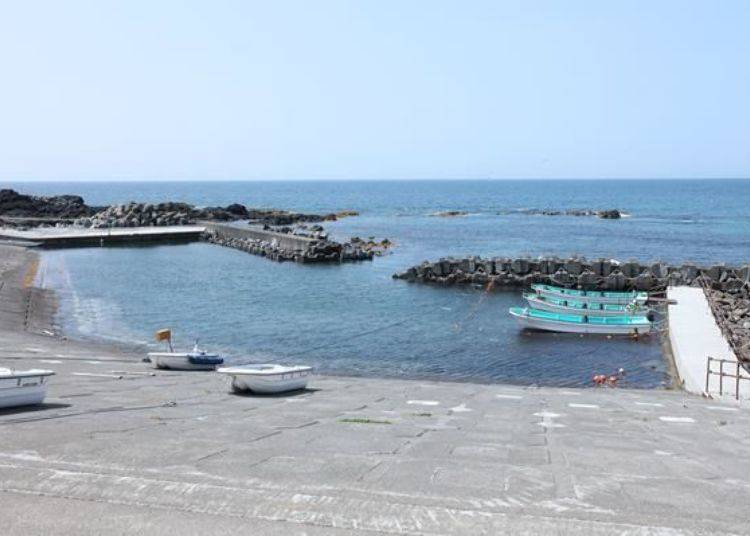
These boats are exactly the same as those used by sea urchin fishermen. The boats are docked in the breakwater where they are protected from the wind and waves, so you do not need to worry about becoming seasick because of rough weather.
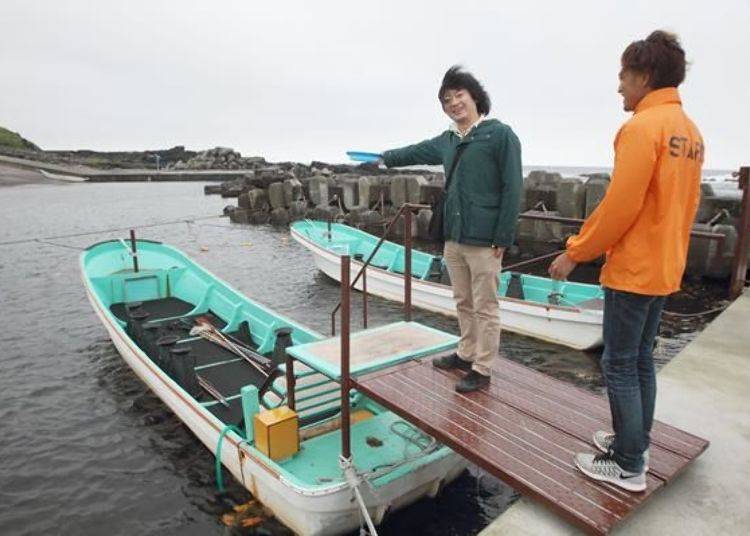
After boarding the boat the staff will give you the necessary equipment and explain how to use it to harvest the sea urchin.

These are exactly the same implements used by sea urchin fishermen. The method for harvesting the sea urchin is also exactly the same. With these you can actually experience what it is like to be a sea urchin fisherman.
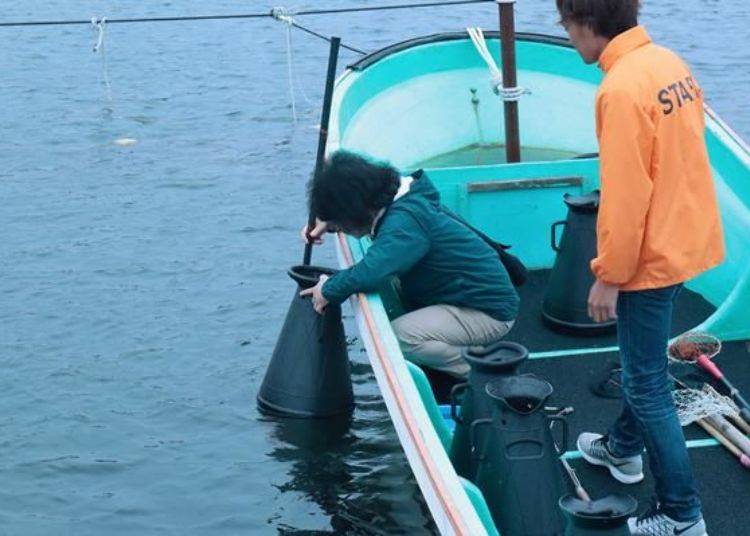
Sea urchin are nocturnal creatures so during the day they hide among the rocks and kelp. The slight rocking of the boat also makes them difficult to see.
The box glasses make it easy to see the bottom even in spite of being rocked by waves.
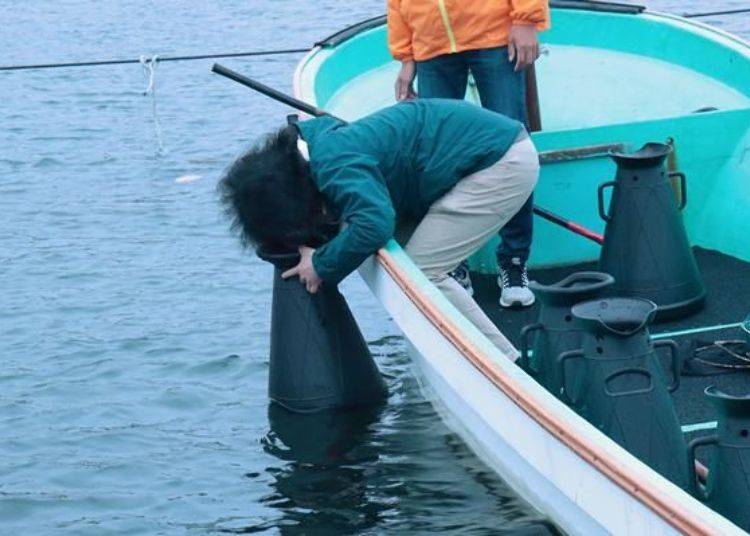
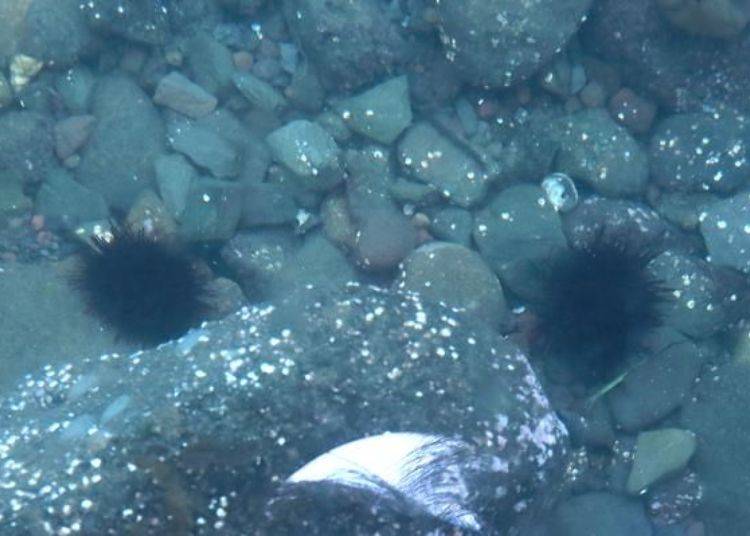
While looking through the box glasses, dip the net into the water and try to scoop up the sea urchin. It is a bit similar to the goldfish scooping stalls seen at festivals, but unlike goldfish, the sea urchin do not move quickly so it is rather easy to scoop them up.
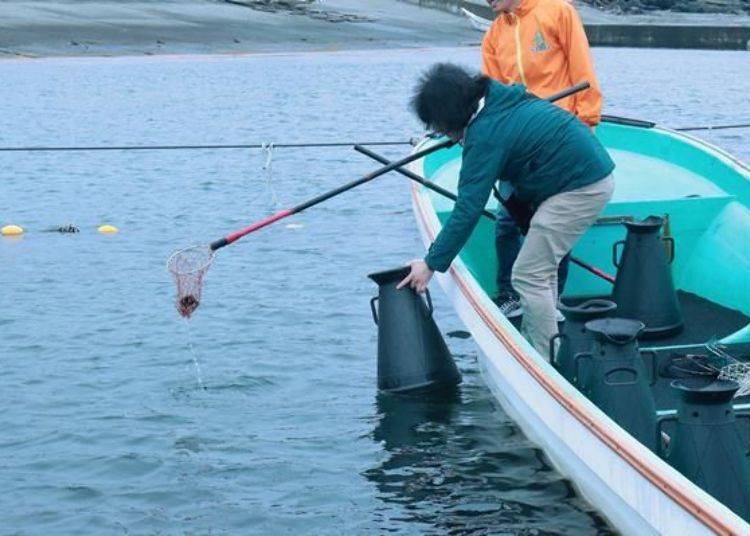
These are all, of course, natural sea urchins! Here on Rishiri, you can really feel close to nature.
When the number of sea urchins on the bottom becomes few due to many people enjoying this sort of experience, the staff will replenish the number with those caught by fishermen. Hence, there is no worry about not being able to find one.
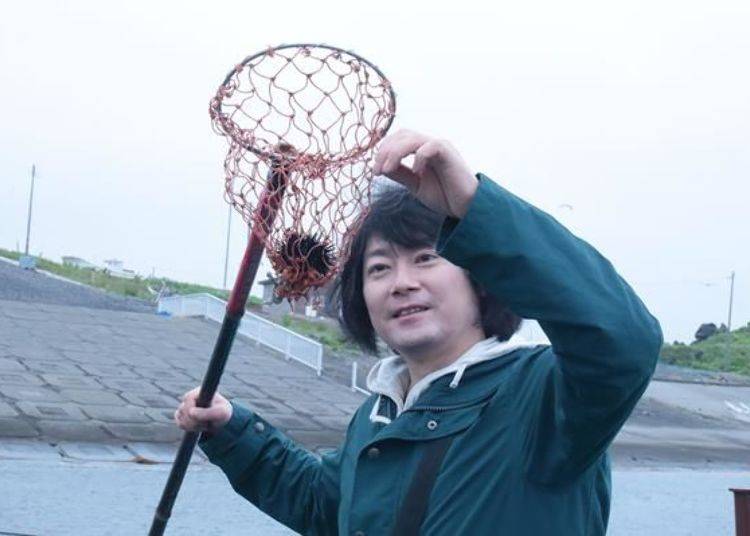
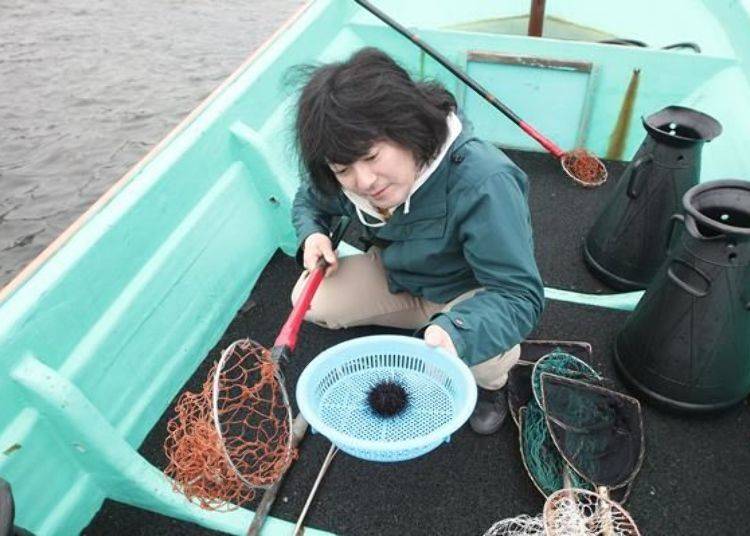
The sea urchin you can catch here are purple sea urchin. The bafun sea urchin are much rarer, so for this experience it is possible to only get purple sea urchin. Also, keep in mind that even if there should be bafun sea urchin here, you are not allowed to catch them.
Crack open the sea urchin you caught and eat it!
After you leave the boat, take your sea urchin to the sink area where you can crack it open.
The tools for doing that are here and they are exactly the same as those used by sea urchin fishermen.
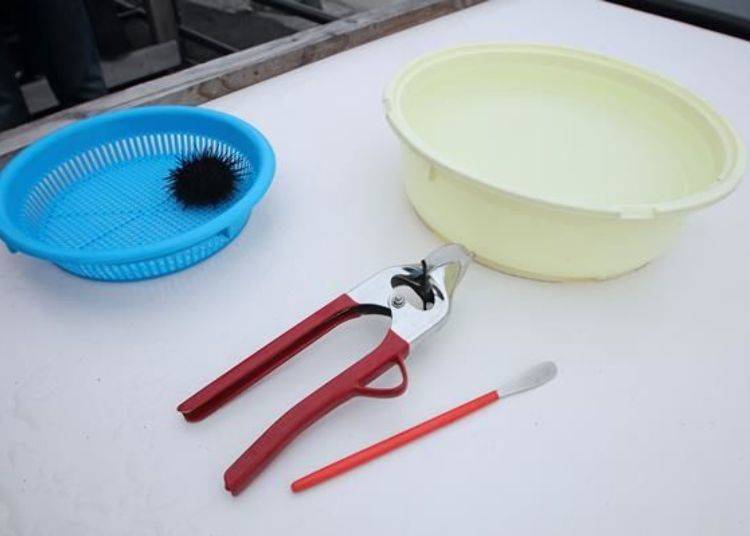
The first step is cracking open the shell and you need to be careful how you hold the sea urchin when you do that.
At first glance it seems that shell is covered everywhere with thorn-like bristles, but in fact, there is one place that is different and that is the mouth of the sea urchin.

When cracking open a sea urchin, put the sea urchin so that the mouth is down and then crack it open from the top.
If you are not sure how to do that, don’t worry because the staff member will gladly help you.
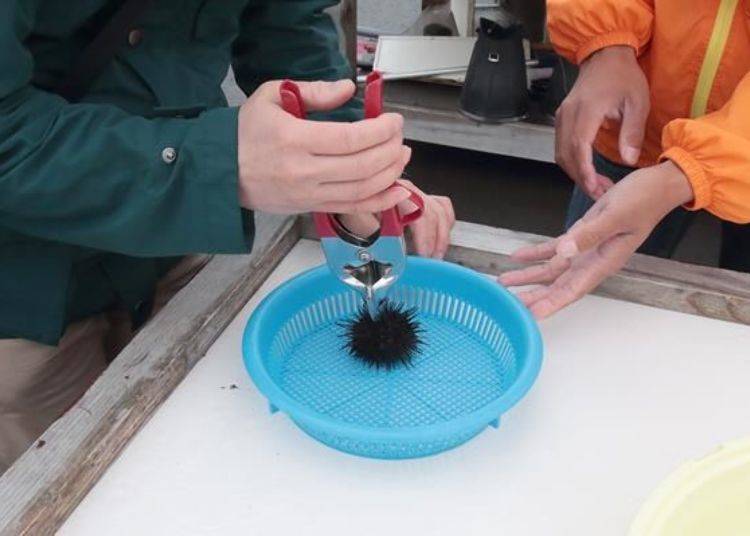
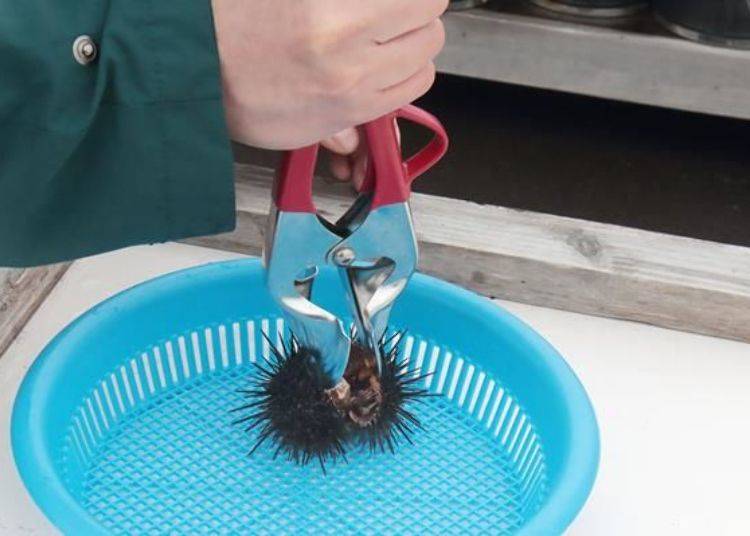
It’s really very simple and takes only a second to crack it open.
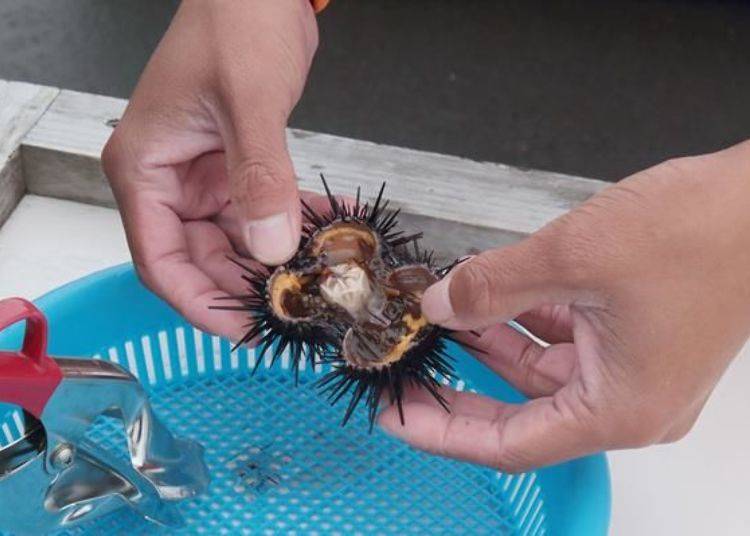
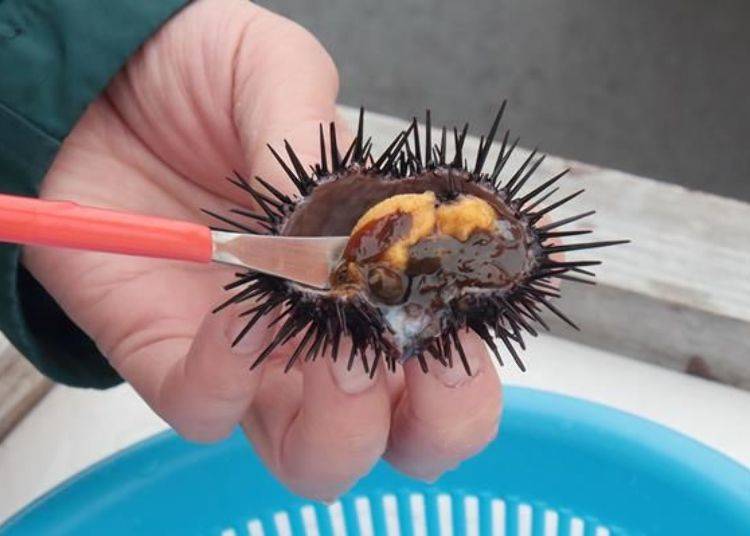
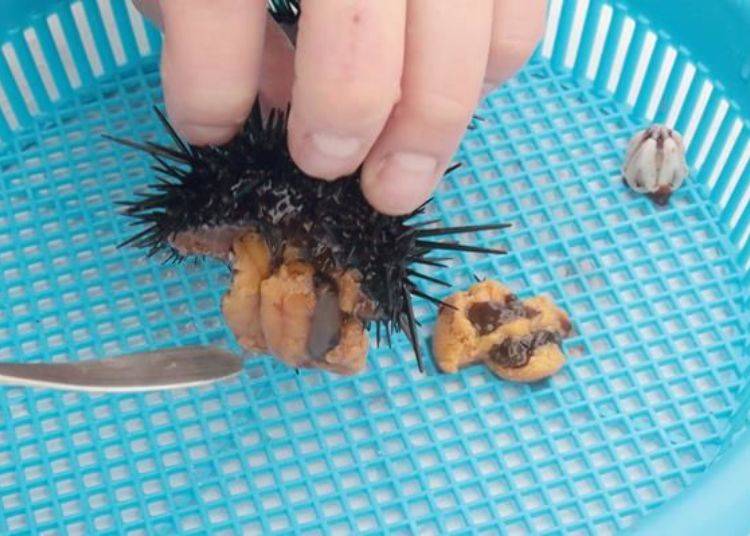
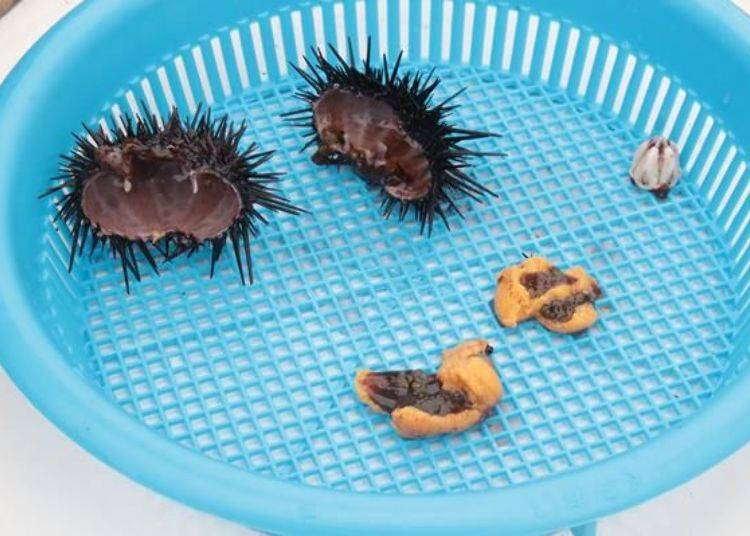
When removing the meat inevitably some of the shell and internal organs get stuck to it, so it is necessary to rinse the meat before eating it.
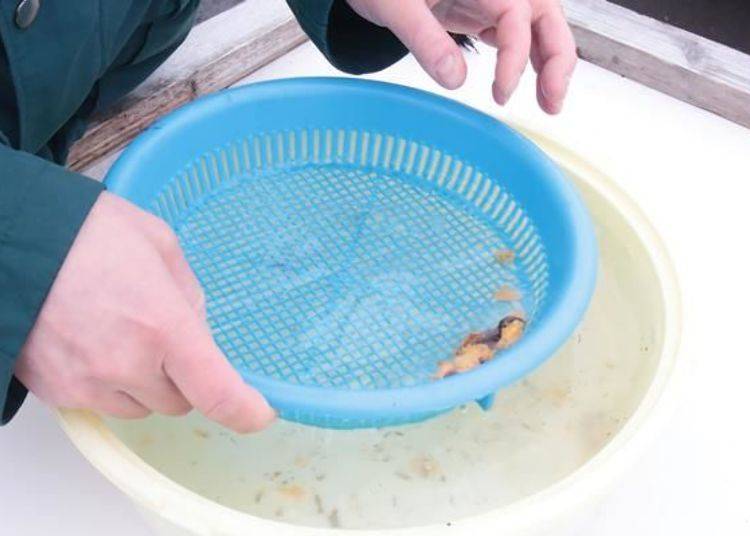
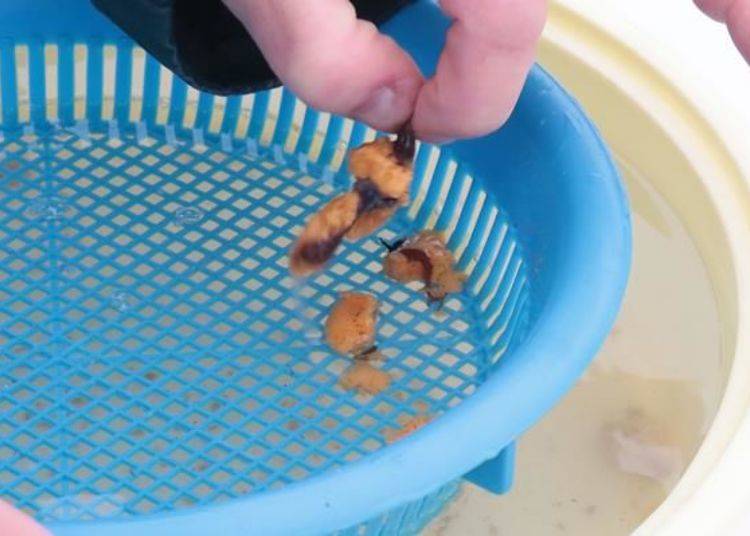
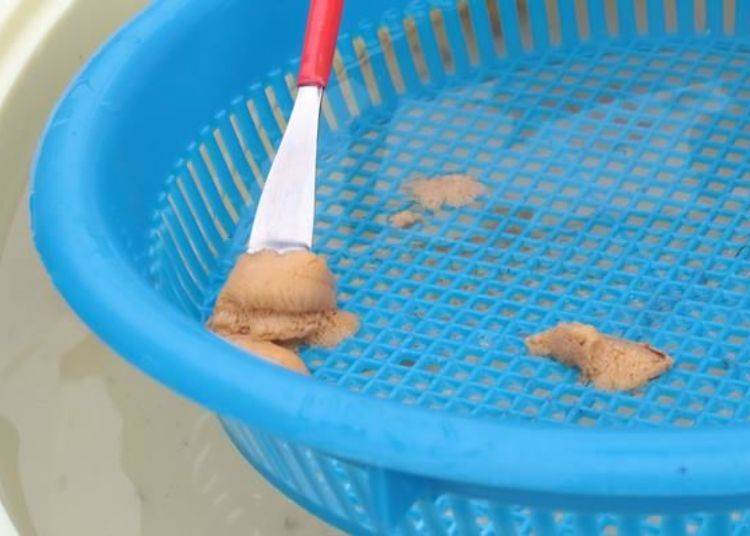
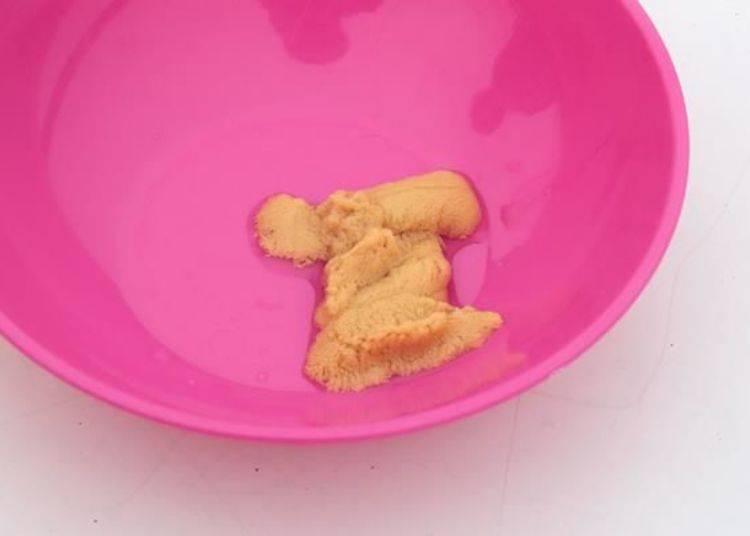
Removing the meat from the sea urchin and cleaning it.
When considering that sea urchin sold in markets is harvested one at a time by fishermen and then cleaned by hand, the high price of sea urchin is understandable.
Try it in a gunkanmaki (rice with a seaweed wrapper)
You can eat the sea urchin as it is after it has been removed and cleaned.

Savoring sea urchin just removed from the shell. It melts the moment you put it in your mouth. It has a slightly salty taste seemed to me like “sea urchin cream cheese”.
At the Kitarindo Kamui Seaside Park shop you can get a gunkanmaki rice with wrapper (100 yen each) on which you can then top it with the sea urchin thus making your own uni gunkanmaki.
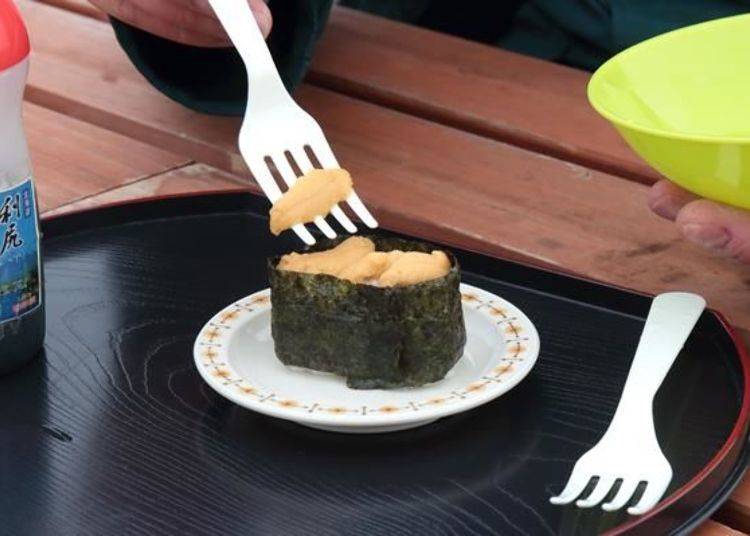

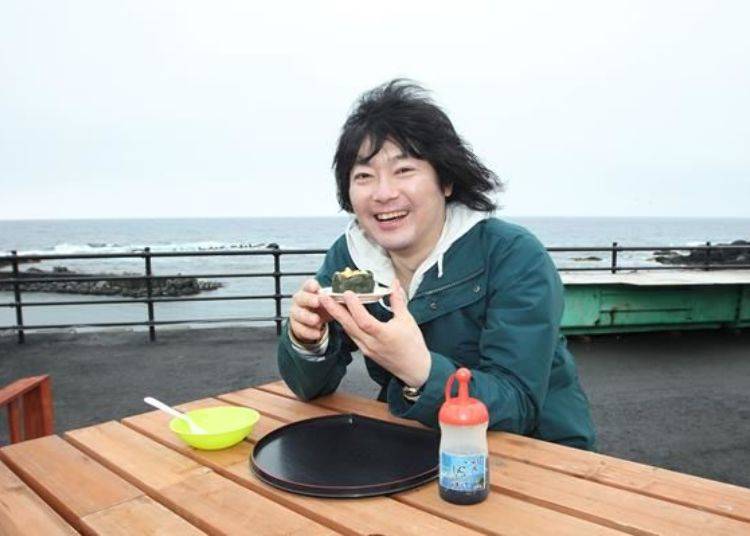
I ate it without dipping it in soy sauce to fully savor the flavor of the sea urchin.
It is delicious as it is. With its slightly salty flavor, the fresh sea urchin has a creamy sweetness that spreads throughout your mouth. Served on a gunkan, the rice and seaweed are the perfect combinations to give it an even milder flavor.
There are many shops where you can eat fresh sea urchins, but catching your own, preparing, and eating it is a rare experience and indeed a memorable experience!
You must try the Aisurishirizan ice cream!
After the sea urchin harvesting experience, I really recommend you try the ice cream at the Kitarindo Seaside Park shop. It’s called Aisurishirizan.
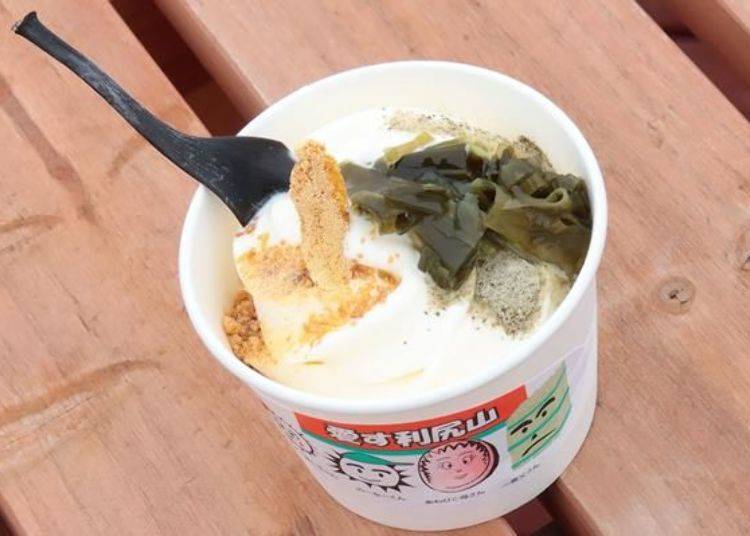
It is vanilla ice cream topped with kelp salt, small pieces of kelp, powdered sea urchin, and large portions of dried sea urchin served with a spoon made of kelp.
This unique dish enables you to enjoy the delicacies of the sea together with ice cream.
It is a one-of-a-kind treat you should try!
Here is the recommended way to eat it.
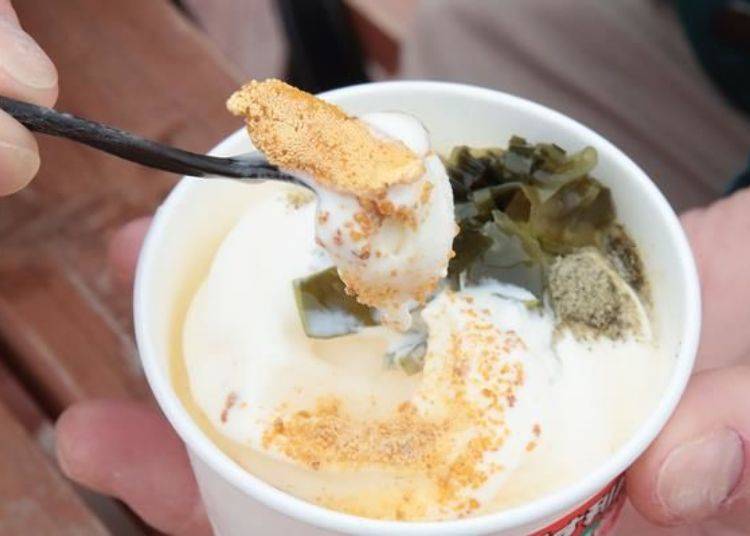
The dried sea urchin crumbles in your mouth and mixes with the soft ice cream. It doesn’t melt in the way that raw sea urchin does but in a more delicate, lighter way that still imparts the full flavor of the sea urchin.
Once you’ve savored the taste of the sea urchin, the next step is to mix all the ingredients.
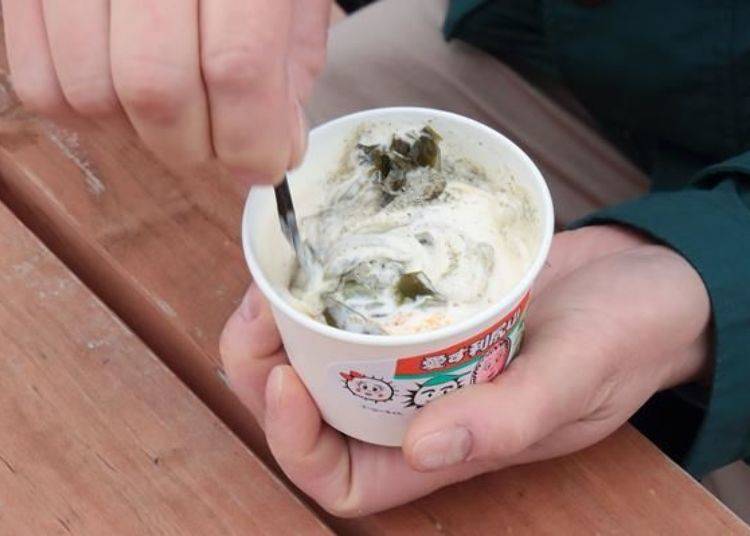
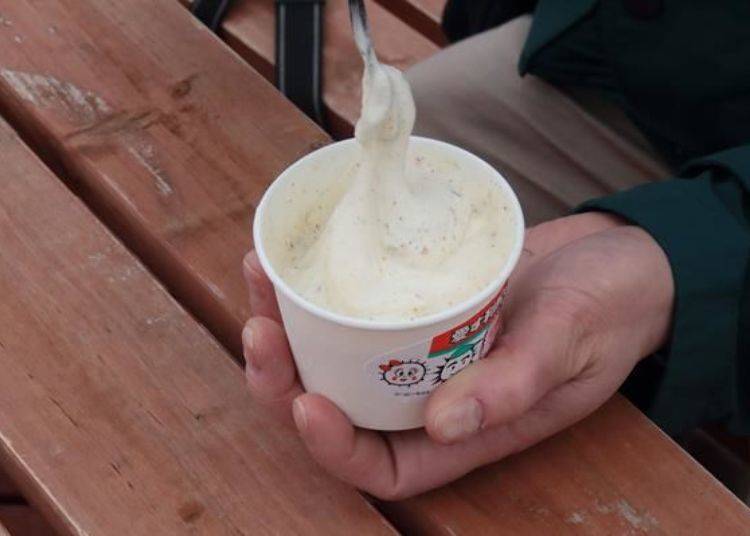
By stirring the mixture, the salt reacts with the ice cream to make it colder, freezing the small bits of kelp making them crisp, which further accents the dish.
The thick, sweet flavor of the fresh sea urchin combined with the umami of the kelp is indescribably delicious. Not only fresh and delicious, but this is also an ice cream full of flavor!
This unique ice cream actually has three patents.
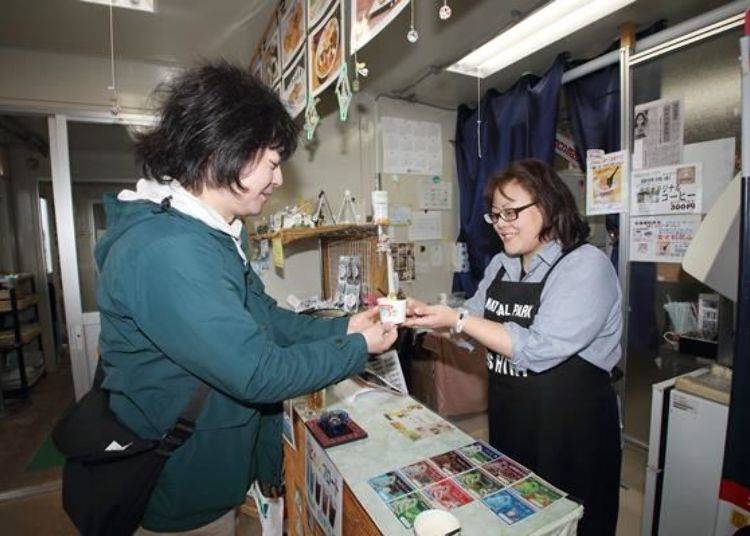
The first patent is for the drying process of the sea urchin.
There not being a local ice cream on Rishiri Island, she began experimenting through trial and error to make one and hit upon the idea of using dried sea urchin. Dried sea urchin has a longer shelf life, thus making it possible to be sold as a gift item like kelp that visitors could take away with them. She thought that tourists would enjoy ice cream made with the island’s most famous product.
The second patent is for the kelp spoon.
There is only one large section at the base of each strand of kelp. Ms. Hirakawa comes from a family of kelp fishermen on Rishiri Island, so she wanted to find a new way to utilize the kelp.
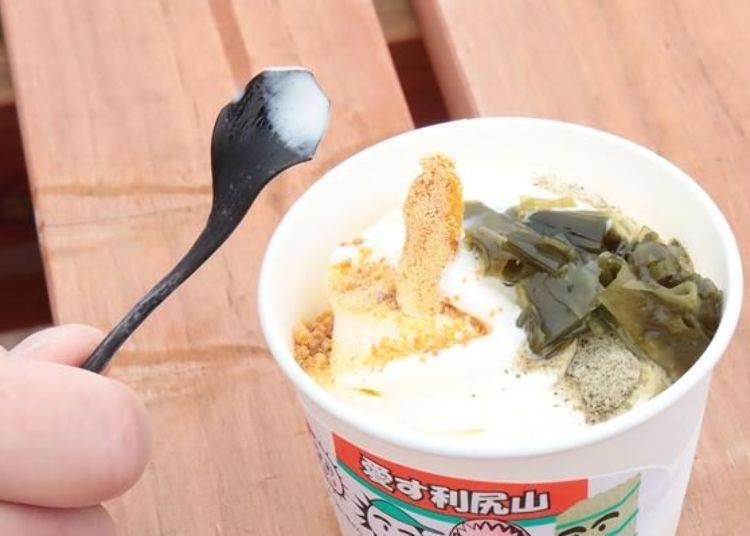
The third patent is for the kelp salt.
Kelp salt is commercially sold, but this kelp salt is made by a different process.
The white powder (glutamic acid) that forms on the surface of the kelp when it is preserved is collected and then mixed with saltwater salt from the sea around Rishiri. It is the heavy mixture of glutamic acid that imparts the strong, delicious salt flavor.
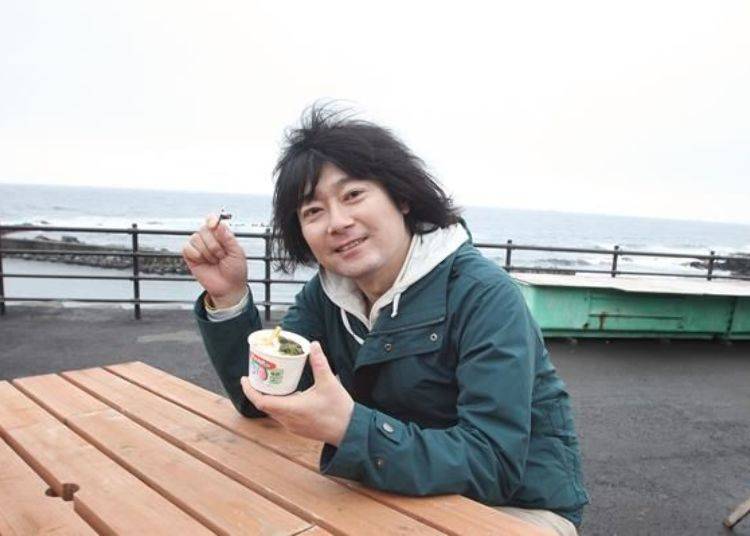
Crab fishing and other fun experiences on Rishiri Island!
In addition to the wild sea urchin fishing experience and the Aisurishirizan there are other gourmet experiences you can also enjoy.
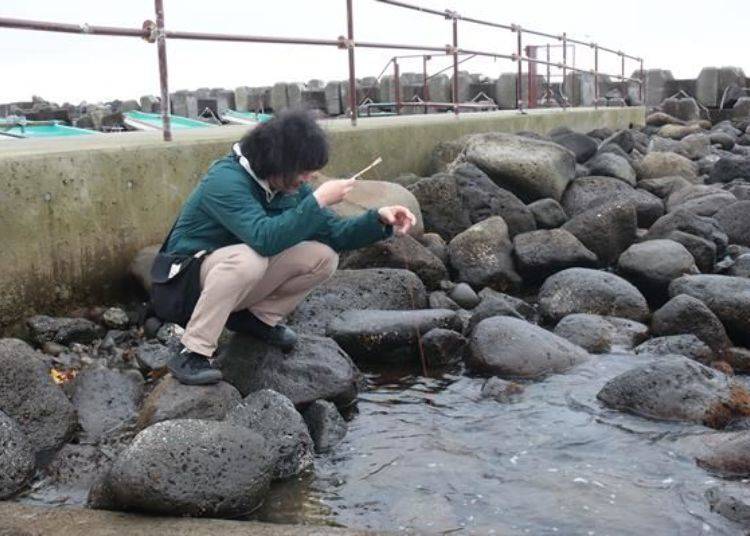
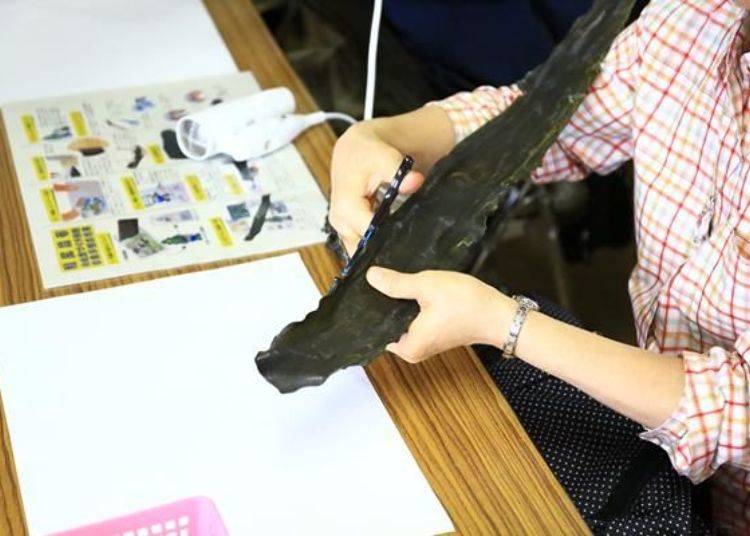
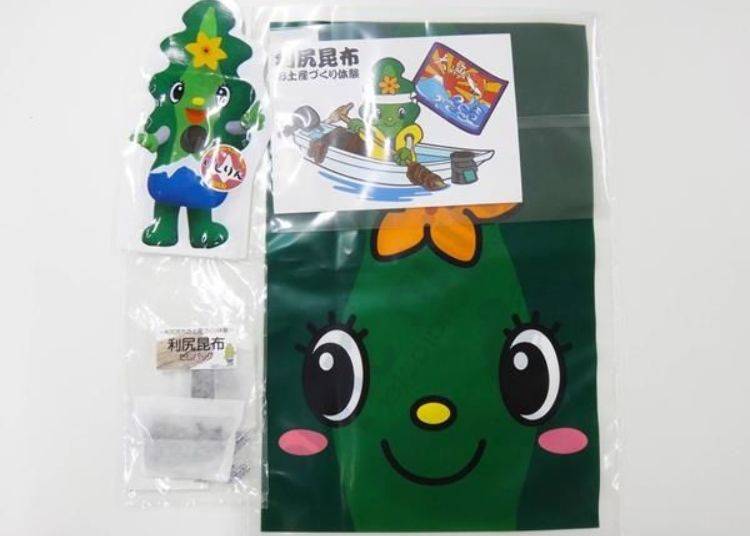
Here are some other popular gourmet items at the Kitarindo Kamui Seaside Park shop!

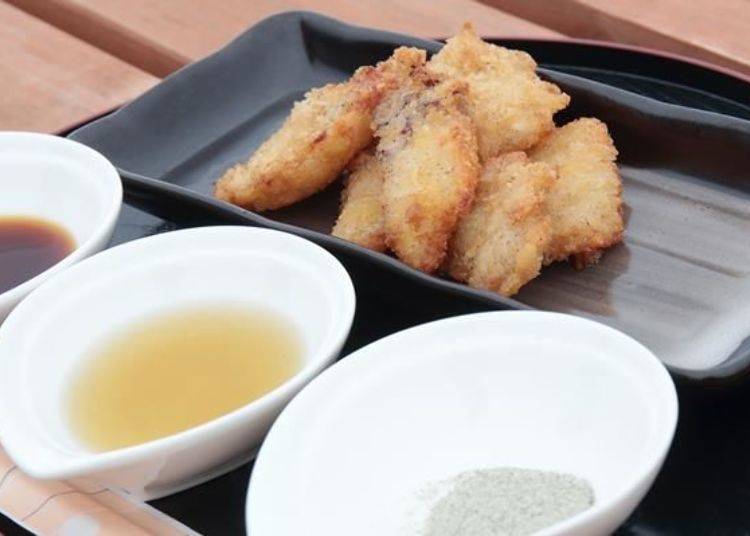
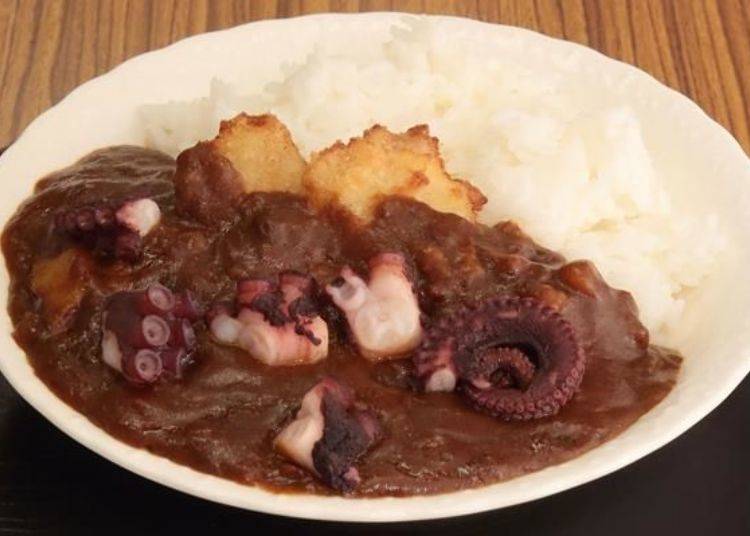
Each and every dish is a gourmet delight in itself and an experience highly recommended.
When you visit Kamui Seaside Park you can experience fishing for wild sea urchin and sampling unique sweets and gourmet dishes. This is a place you certainly should visit when you come to Rishiri Island!
※ All prices mentioned in the article include tax.
-
Kamuikaigan Park神居海岸パーク(うに獲り体験)
- Address 〒097-0401 北海道利尻郡利尻町沓形字神居149-2/kamui149-2, Kutsugata, Rishiri-cho Rishiri-gun, Hokkaido, 097-0401, Japan
- Phone Number 090-6994-2255
Open: June ~ September
Hours: 9:00 a.m. ~ 4:00 p.m.
Closed: always open during the season
Written by:Nobuhiro Kawashima
Related Articles on Rishiri Island
*Prices and options mentioned are subject to change.
*Unless stated otherwise, all prices include tax.
Popular Tours & Activitiess
Recommended places for you
-

Sapporo Clock Tower
Landmarks
Sapporo / Chitose
-

LakeAkan
Rivers, Lakes & Canyons
Abashiri
-
Appealing

Odori Park
Parks
Sapporo / Chitose
-
Appealing

Rukku and Uohei
Izakaya
Sapporo / Chitose
-
Appealing

Shirogane Blue Pond (Aoiike)
Rivers, Lakes & Canyons
Furano / Biei / Sounkyo
-

Niseko Village Ski Resort
Skiing & Snowboarding
Niseko / Rusutsu
-
Ad

Sapporo SATUDORA Shopping Guide: Get Souvenirs, Medicine & More at This Iconic Drugstore (Special Deal Inside!)
-

Scenic Road Trip from Hakodate to Matsumae: Stunning Views, Traditions, and Tasty Delights
by: Nobuka Kawashima
-

Great Local Eats: 5 Expert-Recommended Local Chain Restaurants in Hakodate
by: Nobuka Kawashima
-
Ad

Cycling Through Hokkaido: Discover the Beauty of Memuro and the Tokachi Plains
-

7 Iconic Hokkaido locations that will make your Instagram shine
by: Himanshi Shah
-
Ad

Smart Ways to Avoid Crowds and Enjoy a Safe, Comfortable Trip to Noboribetsu Onsen
-

JR Edition: Visit all of Tokyo in one Day with the Tokyo Metropolitan District Pass!
-

(Video) Walking Tour along Narita Omotesando - Quaint Historical Village near Narita Airport!
by: Victor Gonzalez
-

10 Japanese Seafood Varieties That You Should Try At Least Once
-

Otaru Travel Guide: Inside Hokkaido's Leading Destination (Sightseeing, Food, and Shopping Tips)
-

All-You-Can-Eat Crab & More! 3 Must-Try Restaurants in Sapporo for Fresh Crab Dishes
by: Guest Contributor
-

Complete Guide to Buying Japanese Medicine in Japan: Phrases and Vocabulary You Need to Know
- #best sushi hokkaido
- #things to do hokkaido
- #best ramen sapporo
- #what to bring to japan
- #new years in tokyo
- #what to buy in ameyoko
- #japanese nail trends
- #what to do in odaiba
- #onsen tattoo friendly tokyo
- #daiso
- #best sweets otaru
- #japanese fashion culture
- #best nature furano
- #japanese convenience store snacks
- #best japanese soft drinks















